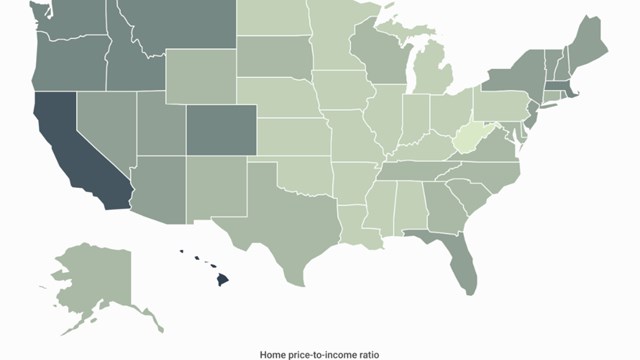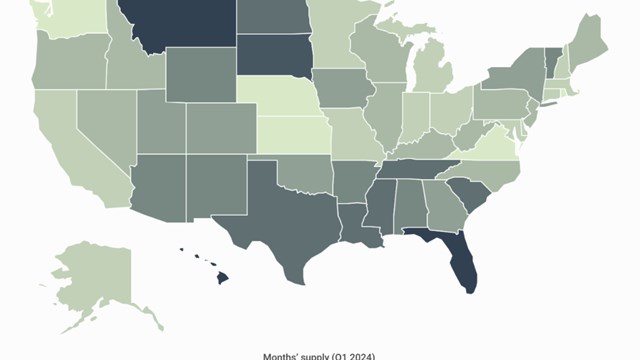As parents we strive to create the perfect home for our children. A place of solitude, refuge–a place to call home. A place where our children can play freely in the backyard; a place where they can socialize and grow with other children; a place where they are safe. As parents we research every aspect of home buying from school districts to neighborhood stores. But what specifically should parents look for in their search for the perfect home? How can they find the perfect home in New York City where white picket fences, large backyards and cul-de-sacs do not exist but, instead, elevators, doormen and the subway are the norm?
According to Jane Gladstein, executive vice president of Corcoran Group Marketing, a division of The Corcoran Group, a real estate brokerage firm in Manhattan, "The perfect apartment rarely exists. We help buyers find the right environment and the right home that meets their needs."
When looking for a home, there are four factors to consider: the neighborhood, the building, the apartment, and of course, your budget. "Keep in mind," cautions Connie Day, marketing director and former sales agent of Bellmarc Companies, a Manhattan-based real estate brokerage and management firm, "You may have to alter your choice of neighborhood to get the space you need within your budget."
The Neighborhood
The most important criteria of a neighborhood, if you have or plan on having children, is the school system. Before you select a neighborhood, Day advises deciding whether to send your children to private or public school. If you choose a public school, you must live in the school district. If you opt for a private school, you’ll want it conveniently located near your home. Being in walking distance of a school is convenient for parents or caretakers who will need to go back and forth to the school. If it’s not, "it doesn’t matter how nice your apartment is," says Day. Adrienne Albert, president of Marketing Directors, a real estate brokerage firm in Manhattan, agrees, "Time is a problem for parents." Close proximity to the school affords parents more time with their children. "What parents are buying is time with their children. You don’t want to schlep your children around the city when you can be spending time with them."
In the terms of the quality of the school, the best way to get a feel for a school is by visiting the classrooms, observing the children and meeting the teachers and administrators. There are also books that review New York City schools which will provide you with a bigger picture of the school system.
Besides the schools, other neighborhood considerations are the retail stores, parks, playgrounds and transportation. You want to be in close proximity to a grocery store, children’s clothing store, family-friendly restaurants, drug store, and even a dry cleaner. Also, be sure there are good parks or playgrounds close by, and transportation is available and is in close proximity to your home, your children’s school and your office.
Stroll through the neighborhood during the morning, afternoon, and evening, see what types of people frequent the parks during various times of the day, are there a lot of children at the parks, how old are the children; what stores are around; is there a subway close by; are there parking garages? Also, "network with parents," says Day, "ask them for recommendations on schools, buildings, neighborhoods. They are a great resource of information."
The Building
Once you have decided on a neighborhood, finding a child-friendly building to live in is the next step. But, how do you know if a building is child-friendly? The first clue is the number of large units. If the building has mostly larger units, three and four bedrooms, it usually means that the building is family-friendly and there will be other children living there. If there are mostly smaller units, one and two bedrooms and studios, most likely there aren’t many children living in the building.
According to Day, you can also ask the doorman if there are a lot of children in the building and speak to people you know in the building or neighborhood. Inquire as to how many stay-at-home moms there are and how many working parents have nannies. In addition, how old are neighboring children? Are most of them the same age as your own?
Another important aspect of a building is security and a 24-hour doorman can make all the difference. "You want someone who will watch out for your children when they are dropped off after school," says Gladstein. Notice how the doorman interacts with the children, how he greets children and their parents/nannies, does he assist them with strollers, etc. It’s important for your children to have a friendly and trusting relationship with your doorman, after all, he does see them everyday. A live-in superintendent is also important for when repairs need immediate attention. "Full service can make all the difference in your choice of buildings," adds Gladstein.
A building without a doorman can be just as safe as for your children as a building with one. Ensure that the vestibule doors are locked at all times to avoid the possibility of strangers roaming the halls. A security system with television monitors in each apartment is ideal so that children see who they are opening the door to as opposed to an intercom that can create a false sense of security–anyone can pretend they are someone else over an intercom.
You also want a well-maintained home. Gladstein advises checking that all restricted areas are cordoned off properly, that there are no ways for children to injure themselves or get into trouble. Also, security cameras throughout the building can locate children who have gone astray.
"Play space in a building is extremely popular," says Albert. "Parents are looking for a more socialized environment for their children." Having a community room or playground helps keep the children busy and offers them the opportunity to play with other children. It is also beneficial for interaction amongst the parents and will lead to "parents watching out for other children," says Gladtsein, "and that is what a good building is all about."
Storage space for bikes, strollers, etc. is another important consideration. "You don’t want to have to keep bringing a bike or stroller up and down the elevator and store it in your apartment," says Albert. "These items take up very precious space in an apartment." Gladtsein agrees, "It’s the little things, like the bike room, that attribute to quality of life. It eases the burden of where to store things." Basement storage is also ideal for rarely used items. It helps create more livable space in your apartment.
Home Sweet Home
Now that you know where you want to live, what features are important in your home? Space is the most important consideration in any apartment. "Parents are looking for space for their children’s things," says Albert, "that is their primary concern."
"There is a trend toward people wanting more space," says Gladstein and "kid-friendly buildings are enjoying enormous growth." According to The Corcoran Group’s most recent quarterly report, in the area of Second Avenue to the FDR Drive between 42nd and 96th Streets, four-bedroom sales have jumped 67 percent from 1999 to mid-2000. On the West Side, from Columbus to West End Avenues between 70th and 76th Streets, sales of three-bedrooms have jumped 55 percent from 1999 to mid-2000.
According to Day it’s not so much the size but the layout of the apartment that’s important. "Is there room to carve out a third bedroom? Is there enough room to accommodate the children you plan to have? Look for ways to eliminate wasted space and make it work for you," says Day.
Other apartment amenities to look for are a washer and dryer, lots of cabinets in the kitchen, more pantry space, and a large refrigerator. If two children are sharing a bathroom, two sinks are ideal.
Whether you choose to live on the East Side or West, Uptown or Down, doing what works best for you and your family is what is most important. Keep your budget in mind every step along the way and you are sure to find the perfect home for your family.
Ms. Mason is assistant publisher of The Cooperator.






Leave a Comment